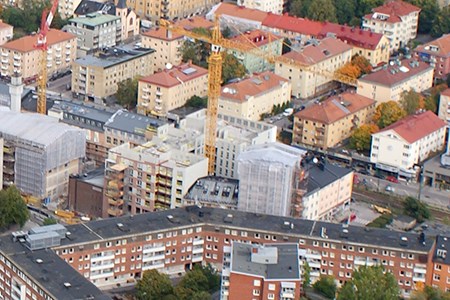The project investigated seven UN-Habitat-derived criteria for sustainable community development in high- versus low housing areas. It strived to test hypotheses on: disconnection with public life; critical thresholds in high-rises; biophysical limits for sun-, sky- and green space access; compatibility with a lean mobility lifestyle; construction- and maintenance costs; dwellers’ living budgets and if high-rises ever can by justified or even attractive for future sustainable cities?
Densification is an established strategy for re-building cities towards more energy efficient, public- and active transport oriented areas with short distances between housing and services.
Recent research and practice ask the urgent question how to densify for saving physical resources and contributing lo a walkable city; improving green-blue values; rendering the urban landscape safer and more attractive. Little has, however, been done to critically investigate the effects of gradually increasing the height af the cityscape.
Researchers and planners wonder if high houses are economically viable, if they save energy and land or if high-rise dwellers actually contribute lo city life. Influential planners even question high-rises as healthy environments.
In this project we investigated seven UN-Habitat-derived criteria for sustainable community development in high- versus low housing areas. We strived to test hypotheses about e.g.:
- disconnection of high-rise dwellers with street-, courtyard-, neighbourhood- and even public city life;
- critical thresholds in high-rises;
- biophysical limits for sun-, sky- and green space access in apartments and courtyards.
Is highrise living compatible with a lean mobility lifestyle? How does a "pit-city" affect aesthetic urban values? And how will vertical densification affect construction costs, maintenance expenditure and dwellers' living budgets. And where and when can high-rises be justified or even attractive for future sustainable cities?
